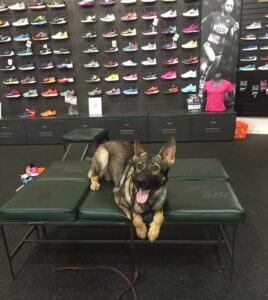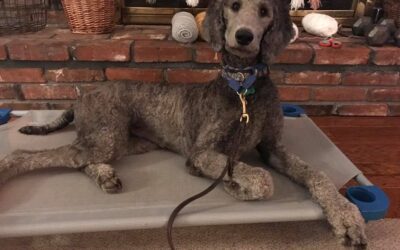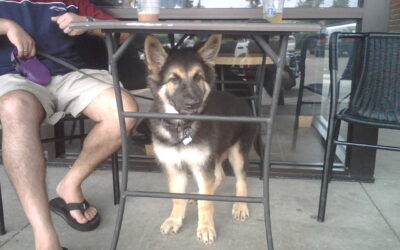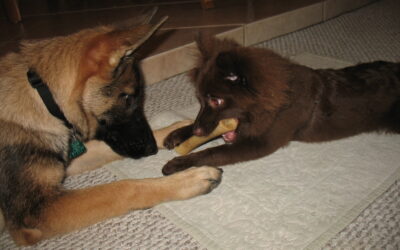I was working with a board and train dog today, and I looked down and could tell he was thinking about stepping off the curb into the road before I told him to. I made a little corrective noise and told him I could see what he was thinking. He looked at me (I could swear a bit chagrined) and settled back down on his haunches to wait for release.
Interested in Dog Body Language?
We can help, contact us now!
An old dog trainer saying is “kill the thought, kill the deed” – in other words, if we can interrupt the thought before it turns into action the whole process gets a lot easier, we may not even have to interrupt the deed at all. Another one master trainer Martin Deeley told me was “you have to know what the dog is thinking before the dog does”. In that case, the dog was out in the yard and Martin looked at him and told me wait to begin training the dog because he was about to poop. In a moment he did (the dog not Martin). 🙂
I can’t think of one thing that is more important to learning how to train a dog and live with a dog than understanding dog body language. Dogs are transparent with their emotions and convey their intents through their body language – in that sense they almost never lie. So if I can begin to understand that language I can “read” the dog. Fear, confidence, humor, uncertainty, anxiety, anger, love – all there for the observation.
So, how does one learn dog body language? How do we see what the dog is thinking before he knows himself? Trainers have a lot of online wars over dog photos posted for analysis, interpreting the body language as this or that intent. There are general mannerisms, but like people dogs are individuals and their intent for a given posture may be different than most dogs. Some breeds have unique body language things all their own, and wolves have very different body language cues sometimes than dogs.
First thing is you have to spend a lot of time watching dogs interact. A lot. I’ve spent the last ten years watching dogs interact constantly (as my job) and feel I’m just scratching the surface as to understanding their body language. A great place to do this is to go where there are lots of dogs. Group social is a place to go where you can bring your own dog and enjoy watching dog interaction, you also get the added bonus of seeing what interactions concern the trainers and which one we ignore because we know they are benign. If you are interested in learning about group social in the Dallas/Fort Worth area please contact me through my website and we will get you on board to begin attending these wonderful classes.
You can also go to the dog park to watch interactions, but DON’T BRING YOUR DOG. The dog park is not a good venue for socializing your dog safely. No referees, nobody is advocating for dogs there. So watch other dogs but don’t take your dogs there.
Hiring a professional dog trainer to spend some time with you working with your dog is also a great way to start to learn about dog body language, I know whenever I do in home lessons we spend a lot of time looking at that and learning about body language. If you are local to DFW contact Redeeming Dogs and I can help, if not still contact me and I will try to see if I know someone holding group socials in your area.
Finally, there are some good books out there about dog body language. I may not agree with all their training techniques (hard to believe I know) but here are a few that are well thought of as understanding body language:
Canine Body Language – Brenda Aloff
On Talking Terms with Dogs – Turid Rugaas.
I promise you that however you learn the language of dogs, taking time to listen to what they are saying (versus thinking about what you want to tell them) is one of the best investments in that relationship you can make.






